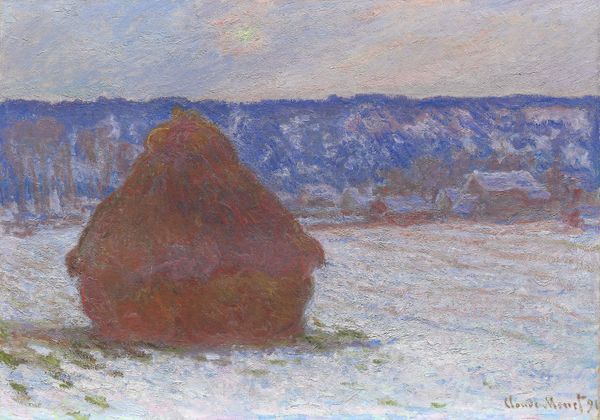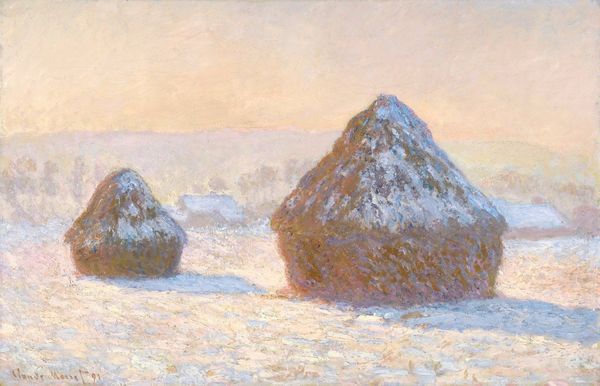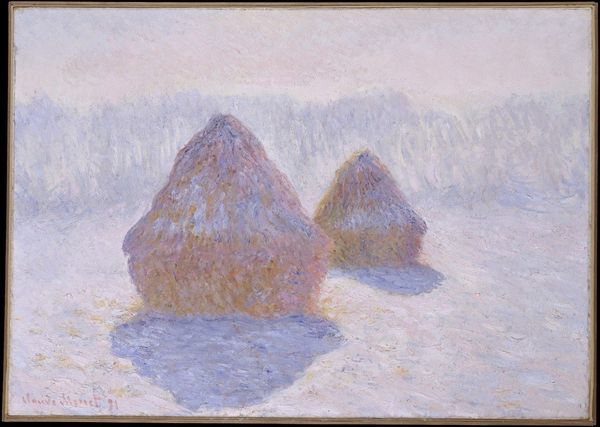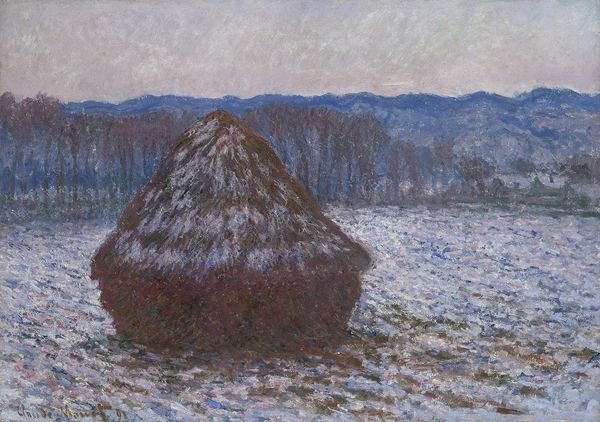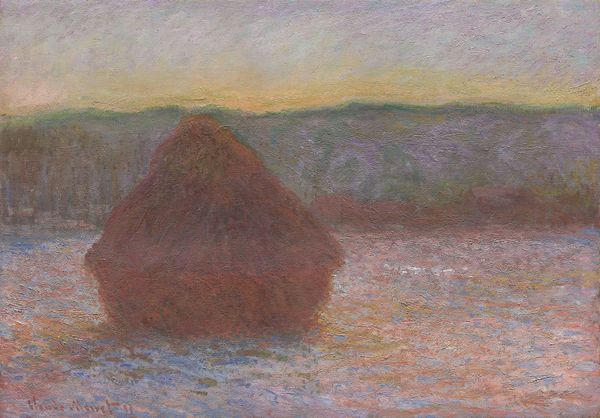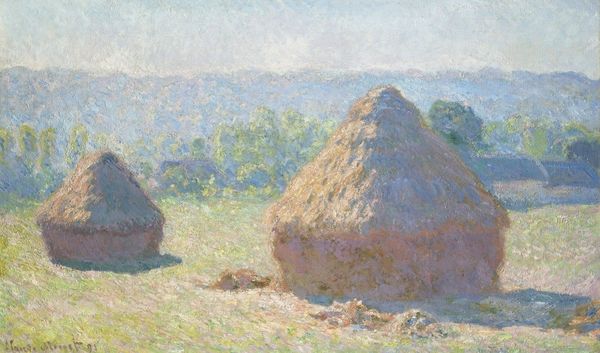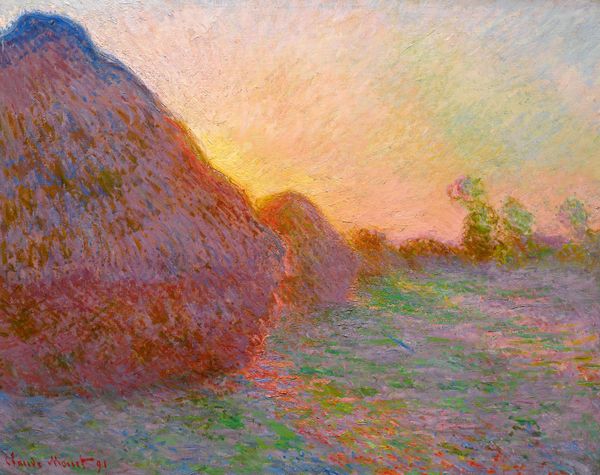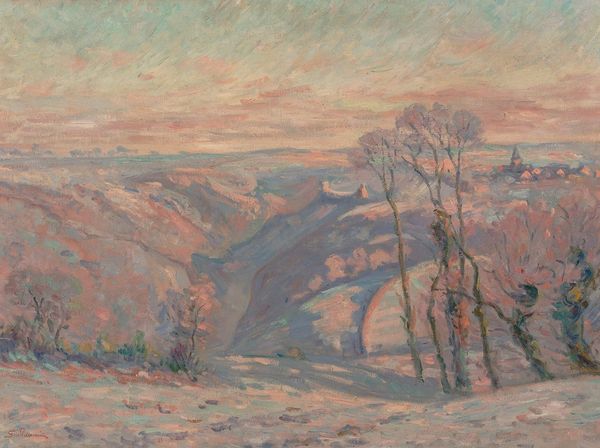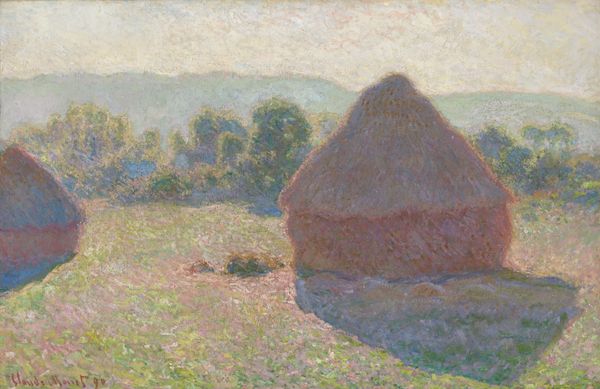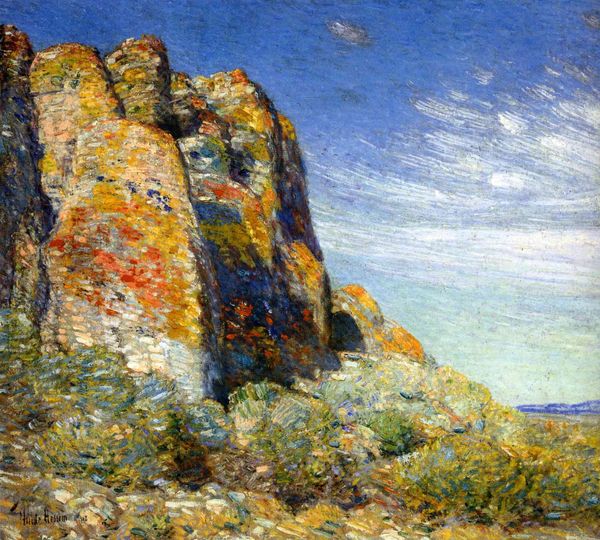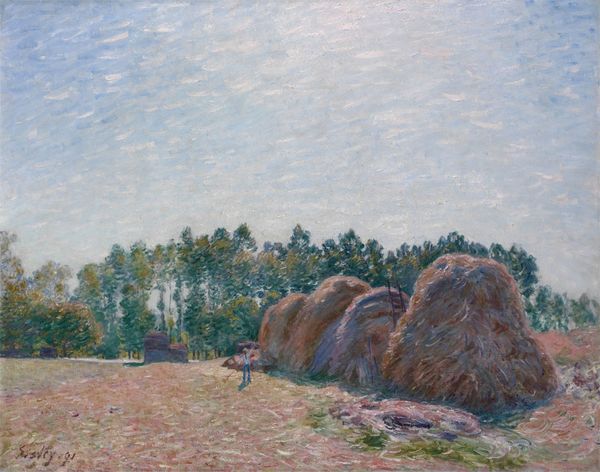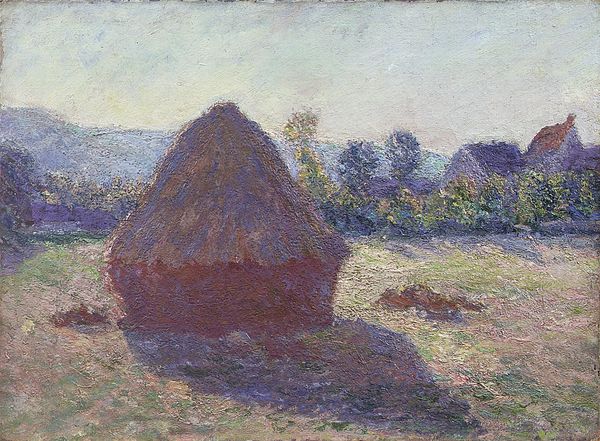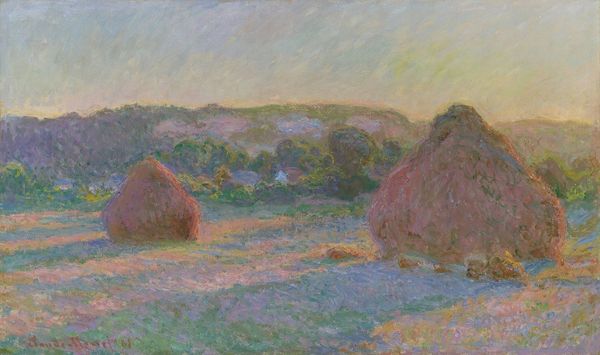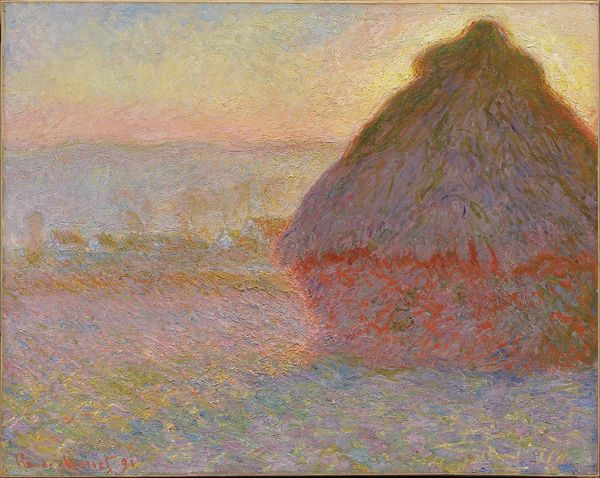
Dimensions: 65 x 92 cm
Copyright: Public domain
Editor: This is Claude Monet's "Grainstack, Snow Effect, Morning" painted in 1891, and done with oil paints in the plein-air tradition. It definitely evokes a sense of cold and quiet. What strikes you most when you look at it? Curator: Well, first off, look at that grainstack, right? Not just as a farm thing, but as a symbol. Grain, especially in winter, can be tied to concepts of preservation, provision, hope – a silent promise of future harvests. And the light… how does that morning light speak to you? Editor: I think it highlights the temporary nature of the scene, especially the melting snow. But that's interesting, hope and the future are in the form of hay. Curator: Exactly! Hay or wheat…it's the symbolic heart of settled societies, especially relevant as industrialization increased. What cultural memories might this image trigger in a viewer? Consider our primal connection to agriculture. Editor: I see it now, it makes me think of the changing world. Sort of an assurance, maybe even a protest? The more I look at this work the more it means. Curator: And notice how Monet’s brushstrokes—short, broken—they mirror this ephemeral quality, this constant flux. Does that resonate with the emotional content of winter mornings? Editor: It really does. You've given me a whole new way of appreciating how Monet is using symbols, beyond just representing a landscape. Curator: Absolutely. And understanding the symbolic weight of those choices enriches our dialogue with the artwork across time and cultures. We’ve come to realize that the Impressionist vision is more complicated that simple observation. Editor: Yeah, thanks for bringing a deeper perspective, it helps with finding new avenues to understanding visual culture.
Comments
artera almost 2 years ago
⋮
In October 1890, Claude Monet (1840-1926) wrote in aletter to his future biographer Gustave Geffroy: "I am hard at it, grinding away at a series of different effects, but at this time of the year the sun sets so quickly I cannot keep up with it..." He was describing his Haystack ("Grainstack") series of paintings, and went on to say that what he was after was what he called "instantaneity" —the "enveloppe" of light that unifies a scene for an instant, before changing to create a new momentary effect. Though the paintings were begun out of doors, they were "harmonized" in the studio, and Monet intended them to be viewed together. Compare this image to Haystack at Sunset, Frosty Weather (opposite. The powerful compositions are ay inar, wit a he powerful simplity. But in ney similar, with an almost abstract simplicity. But in Frosty Weather the stack and the entire scene glow hot in the fiery sunset, while in this painting the dark shape of the haystack is enveloped in the chilly light of a late winter afternoon, and set against the ice blue of the snow-covered field and the cool blue of the landscape "band" behind it. The winter sun is low in the sky, and lights the stack from behind, casting a long elliptical shadow across the canvas. When fifteen Haystack paintings were exhibited together in 1891, the show was a triumph. Critics not only saw Monet's unique rendering of light effects, but also responded to the French rural subject matter. The artist may also have been concerned with the haystacks themselves as symbols of the fertility and prosperity of the French agricultural landscape.
Join the conversation
Join millions of artists and users on Artera today and experience the ultimate creative platform.
